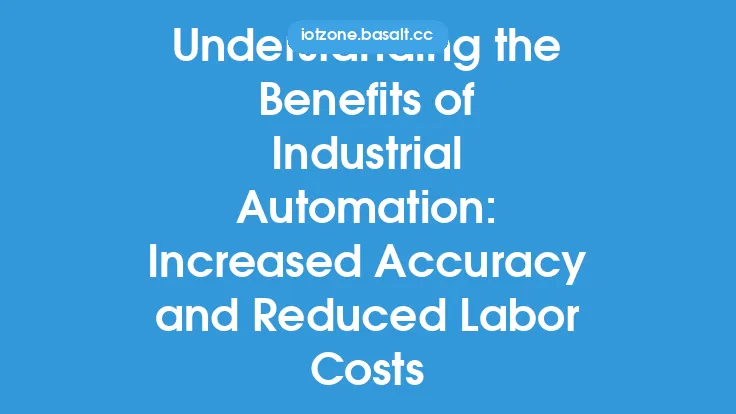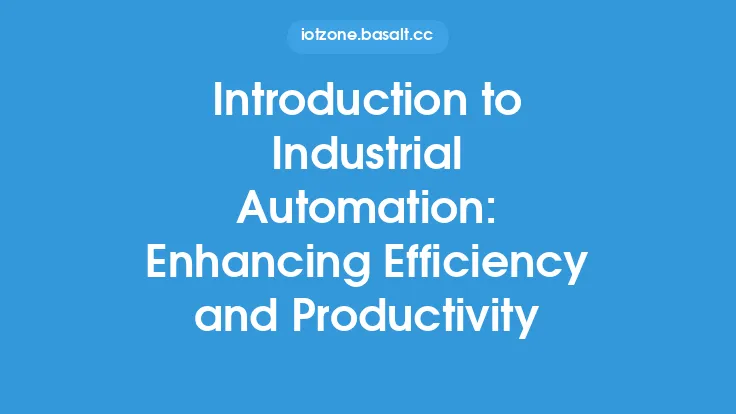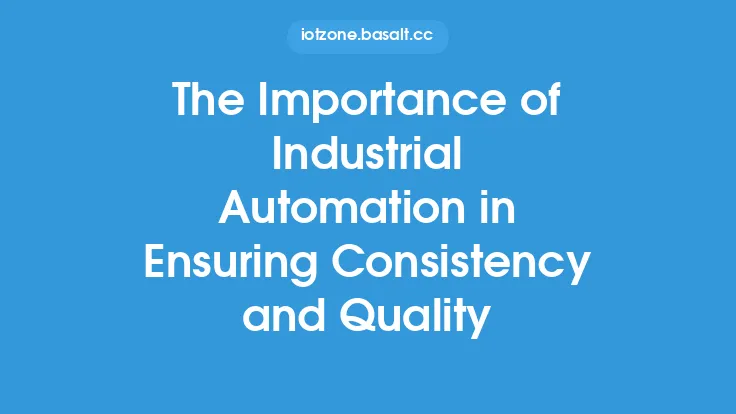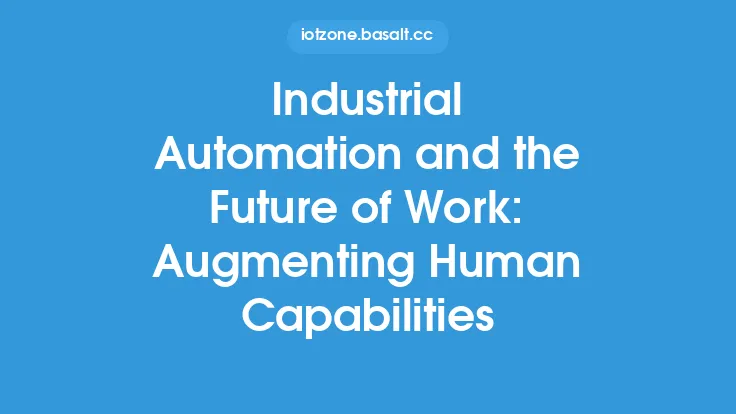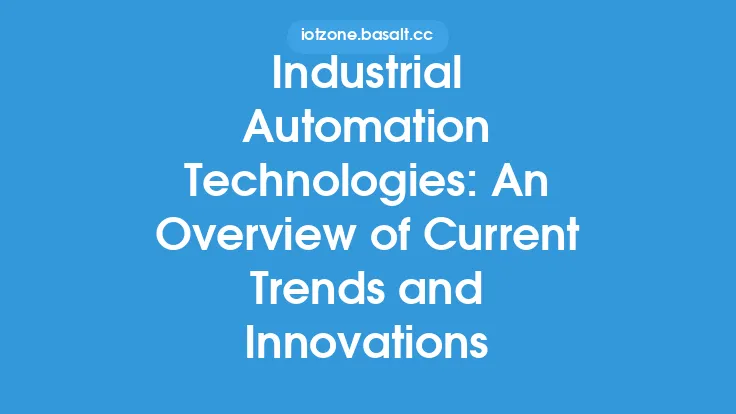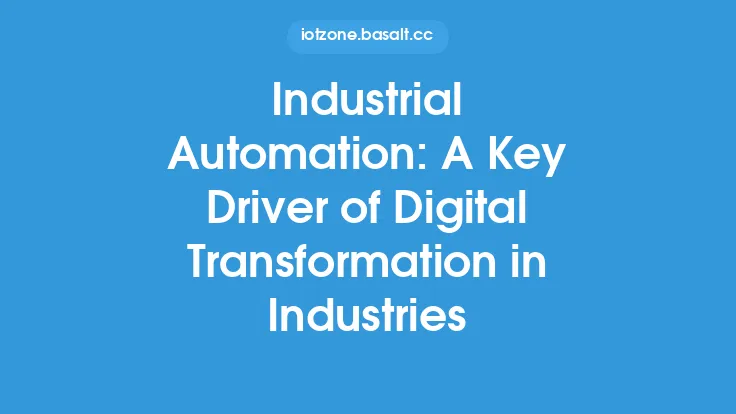Industrial automation has revolutionized the way industries operate, making it possible to achieve unprecedented levels of efficiency, productivity, and quality. At the heart of this revolution is the improvement of operational visibility and control, which enables organizations to make informed decisions, optimize processes, and respond to changes in real-time. In this article, we will delve into the ways industrial automation improves operational visibility and control, exploring the technologies, strategies, and benefits that underpin this critical aspect of modern industry.
What is Operational Visibility and Control?
Operational visibility and control refer to the ability of an organization to monitor, manage, and optimize its operations in real-time. This involves having access to accurate and timely data, being able to analyze and interpret this data, and using the insights gained to make informed decisions. Operational visibility and control are essential for industries to respond to changes in demand, supply chain disruptions, and other external factors that can impact operations. Industrial automation plays a critical role in achieving operational visibility and control by providing the necessary tools, technologies, and strategies to monitor, manage, and optimize operations.
The Role of Industrial Automation in Improving Operational Visibility and Control
Industrial automation improves operational visibility and control in several ways. Firstly, it provides real-time data and insights into operations, enabling organizations to monitor and analyze performance in real-time. This is achieved through the use of sensors, machines, and other devices that collect data on production processes, equipment performance, and other operational parameters. The data collected is then transmitted to a central location, such as a control room or a cloud-based platform, where it can be analyzed and interpreted. Industrial automation also enables organizations to automate many operational tasks, freeing up staff to focus on higher-value activities such as analysis, decision-making, and strategy development.
Technologies Used in Industrial Automation
Several technologies are used in industrial automation to improve operational visibility and control. These include supervisory control and data acquisition (SCADA) systems, manufacturing execution systems (MES), and enterprise resource planning (ERP) systems. SCADA systems are used to monitor and control production processes, while MES systems are used to manage and optimize production operations. ERP systems, on the other hand, are used to manage and integrate all aspects of an organization's operations, including production, supply chain, and finance. Other technologies used in industrial automation include the internet of things (IoT), artificial intelligence (AI), and machine learning (ML). These technologies enable organizations to collect and analyze large amounts of data, automate decision-making, and optimize operations in real-time.
Benefits of Improved Operational Visibility and Control
The benefits of improved operational visibility and control are numerous. Firstly, it enables organizations to respond to changes in demand and supply chain disruptions in real-time, reducing the risk of production downtime and lost revenue. Secondly, it enables organizations to optimize production processes, reducing waste and improving quality. Thirdly, it enables organizations to make informed decisions, using data and insights to drive strategy and operations. Finally, it enables organizations to improve safety, reducing the risk of accidents and injuries. Other benefits of improved operational visibility and control include increased efficiency, productivity, and competitiveness, as well as reduced costs and improved customer satisfaction.
Strategies for Implementing Industrial Automation
Implementing industrial automation requires a strategic approach, taking into account the organization's goals, objectives, and operational requirements. The first step is to identify the areas of operations that can benefit from automation, such as production, supply chain, or maintenance. The next step is to select the appropriate technologies and systems, such as SCADA, MES, or ERP. The organization must also develop a plan for implementing and integrating these technologies, including training staff and developing new processes and procedures. Finally, the organization must continuously monitor and evaluate the effectiveness of its industrial automation systems, making adjustments and improvements as needed.
Challenges and Limitations of Industrial Automation
While industrial automation offers many benefits, it also presents several challenges and limitations. One of the main challenges is the high upfront cost of implementing industrial automation systems, including the cost of hardware, software, and training. Another challenge is the need for specialized skills and expertise, including programming, engineering, and data analysis. Additionally, industrial automation systems can be complex and difficult to integrate, requiring significant time and resources to implement and maintain. Finally, there is also the risk of cyber attacks and data breaches, which can compromise the security and integrity of industrial automation systems.
Best Practices for Implementing Industrial Automation
To overcome the challenges and limitations of industrial automation, organizations should follow best practices for implementation and maintenance. These include developing a clear and comprehensive strategy for industrial automation, selecting the right technologies and systems, and providing training and support for staff. Organizations should also continuously monitor and evaluate the effectiveness of their industrial automation systems, making adjustments and improvements as needed. Additionally, organizations should prioritize cybersecurity and data protection, implementing robust security measures to prevent cyber attacks and data breaches. Finally, organizations should also consider the potential impact of industrial automation on jobs and skills, providing training and support for staff to develop new skills and adapt to changing operational requirements.
Conclusion
In conclusion, industrial automation improves operational visibility and control by providing real-time data and insights, automating operational tasks, and enabling organizations to make informed decisions. The technologies used in industrial automation, such as SCADA, MES, and ERP, enable organizations to monitor and control production processes, manage and optimize operations, and integrate all aspects of operations. The benefits of improved operational visibility and control include increased efficiency, productivity, and competitiveness, as well as reduced costs and improved customer satisfaction. To implement industrial automation effectively, organizations should follow best practices, including developing a clear strategy, selecting the right technologies, and providing training and support for staff. By doing so, organizations can unlock the full potential of industrial automation and achieve unprecedented levels of operational excellence.
